Sow Papaya: Conditions, Irrigation, Plantation [Step by Step + Images]
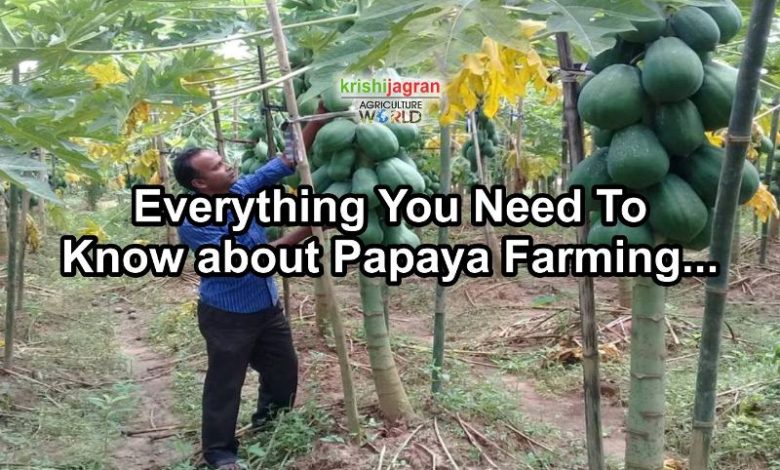
Papaya is one of the most commercially important tropical and subtropical fruits in the world.
It is not only delicious, but it ishighly nutritiousand brings a lot of benefits to the body.
Furthermore, it is aeasy to grow fruitfast – growing and short-lived.
However, it is not one of the most common crops.
In the following article we tell you the easiest way to plant papaya.
Important points to plant Papaya:
- When? The best date is usually between March and April.

- Where? It prefers warm climates. Does not tolerate cold. In very humid soils it does not develop well either. It is a tropical tree.
- Harvest time? The first flowers appear a month and a half after the transplant.
- How do we prepare the land? Papaya grows in any type of soil as long as it is light, fertile and rich in humus, soft, deep and permeable.
- How do we water? It is ideal with drip or spray. Depending on how hot it is, we will water every two days.
- How to sow? Here step by step.
- How do we harvest? The harvest is determined when the fruits begin to soften and lose their green color.
- Plagues and diseases? Red Spider, Nematodes, Aphid, Anthracnose.
When should papaya be planted?
The best date to plant papayaIt is in March and April.
The first flowers appear a month and a half after the transplant.
We will be able to obtain the first harvest between October and November.
Where do we grow papaya?
It is a relatively demanding crop in terms of climate.
In this sense, humidity and heat are the essential conditions for the proper development of papaya.
easy to grow fruit, since they are quite intolerant to frost.
 In very humid lands it does not develop very well either, so you have to be very careful when planting it in very rainy climates.
In very humid lands it does not develop very well either, so you have to be very careful when planting it in very rainy climates.
As for the wind, it supports it well since its stem is very flexible. The strong winds can damage the leaves but in no way the flowers or the fruits.
Its optimum growth temperature is 25 ºC.
Temperatures below 20 °C affect flowering and fruit development.
How often should papaya be watered?
 It requires a relative humidity between 65 and 85%. A lower range can affect fruit set.
It requires a relative humidity between 65 and 85%. A lower range can affect fruit set.
Papaya is quite prone to root suffocation, so it is important to have good drainage in the soil so as not to cause waterlogging.
Depending on the type of soil, we must establish an irrigation scheme.
If you plant papaya on a substrate with good drainage, but which retains water well, it will suffice to water them once every four days.
If, on the other hand, the land is sandy or rocky, it should be watered once every two days, especially during high temperatures.
The soil should be watered when the top layers, the first 5 cm, feel moderately dry to the touch. Great care must be taken todo not create puddles.
How do we prepare the land?
Papaya grows in any type of soil as long as it is light, fertile and rich in humus, soft, deep and permeable.
As it has soft and spongy roots, its cultivation is not recommended in soils that are too humid, heavy or compact, or with poor drainage, as the roots will rot.
Requires a floor with a balance ofpH between 5 and 7.
Favorable associations?
Corn and roselle are crops that can help control ring spot virus, spread by aphids.
How to plant papaya step by step
STEP 1: Clear the ground
Extract weeds and remains of previous crops and all kinds of residues to ensure that your papaya receives the adequate amount of nutrients.
All plants must be pulled out by the roots to prevent them from growing back.
STEP 2: Prepare the ground
Moisten the ground before sowing; This reduces the risk of the seeds being moved by the force of the water.
Fertilize the soil. Spread a 1-inch layer of compost on top of the soil.
If you plant in a pot, it should be at least 20 cm deep.
STEP 3: Put the seeds in the soil
To do this, create a small mound of soil and plant 2-3 seeds 1-2cm deep. Not only will the mound help improve drainage, it will allow the sun to warm the soil faster, speeding up germination.
When you’re done, cover them lightly.
If you want to grow multiple plants, keep in mind that each hole should be kept 10-20 centimeters apart.
STEP 4: Select the healthiest and strongest seedlings
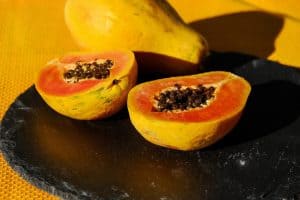 The seeds will germinate between 15 and 30 days. If more than one seed has germinated in each hole, keep the strongest one. To do this, do not pull the weak one, as you can damage the leaves.
The seeds will germinate between 15 and 30 days. If more than one seed has germinated in each hole, keep the strongest one. To do this, do not pull the weak one, as you can damage the leaves.
A simple pruning at ground level is sufficient.
They will take between 45 and 60 days to become strong seedlings, ready to be transplanted to their final destination. In the meantime, you can protect the shoots with wire mesh.
STEP 6: Help plants pollinate
This is done by limiting the excess of male plants.
To do this, you must wait for the first flowers to appear, about a month and a half after the transplant, or when they reach a meter in height.
Identify the sex of your papaya: male plants flower first. They have long stems with several flowers.
Instead, female plants have larger flowers and closer to the trunk. For them to produce fruit, you will only need one male plant for every ten females.
The rest may need to be removed.
Some papaya plants are hermaphrodites, and they pollinate themselves. If in doubt, consult an expert.[
STEP 7: Protect the tree and give it good maintenance
Water them as soon as you notice that the top layers of the soil are about to dry out. No more than 3 times a week, depending on the weather conditions in your region.
Put up a chain link mesh to protect the plants while they are growing.
You can feed your papaya with an organic fertilizer, such as earthworm humus.
How to harvest papaya
 Papaya fruiting occursalmost a year after the transplant,depending on the variety.
Papaya fruiting occursalmost a year after the transplant,depending on the variety.
To improve the harvest, it is advisable to thin out the flowers and fruits, eliminating the most defective ones. A year, a papaya produces about 50 fruits, on average.
Harvesting is determined when the fruits begin to soften and lose their green color.
Five days after picking the fruit, complete ripening is reached, and that is when the papayas reach their characteristic yellow or orange color.
They are fruits that bruise easily, so it is recommended to keep them wrapped with some cushioning material to facilitate their transport.
If you feel like it, you can refrigerate ripe papayas to extend their life.
Common pests and diseases
Some of the most common pests and diseases that affect papaya are:
Red Spider (Tetranychus urticae)
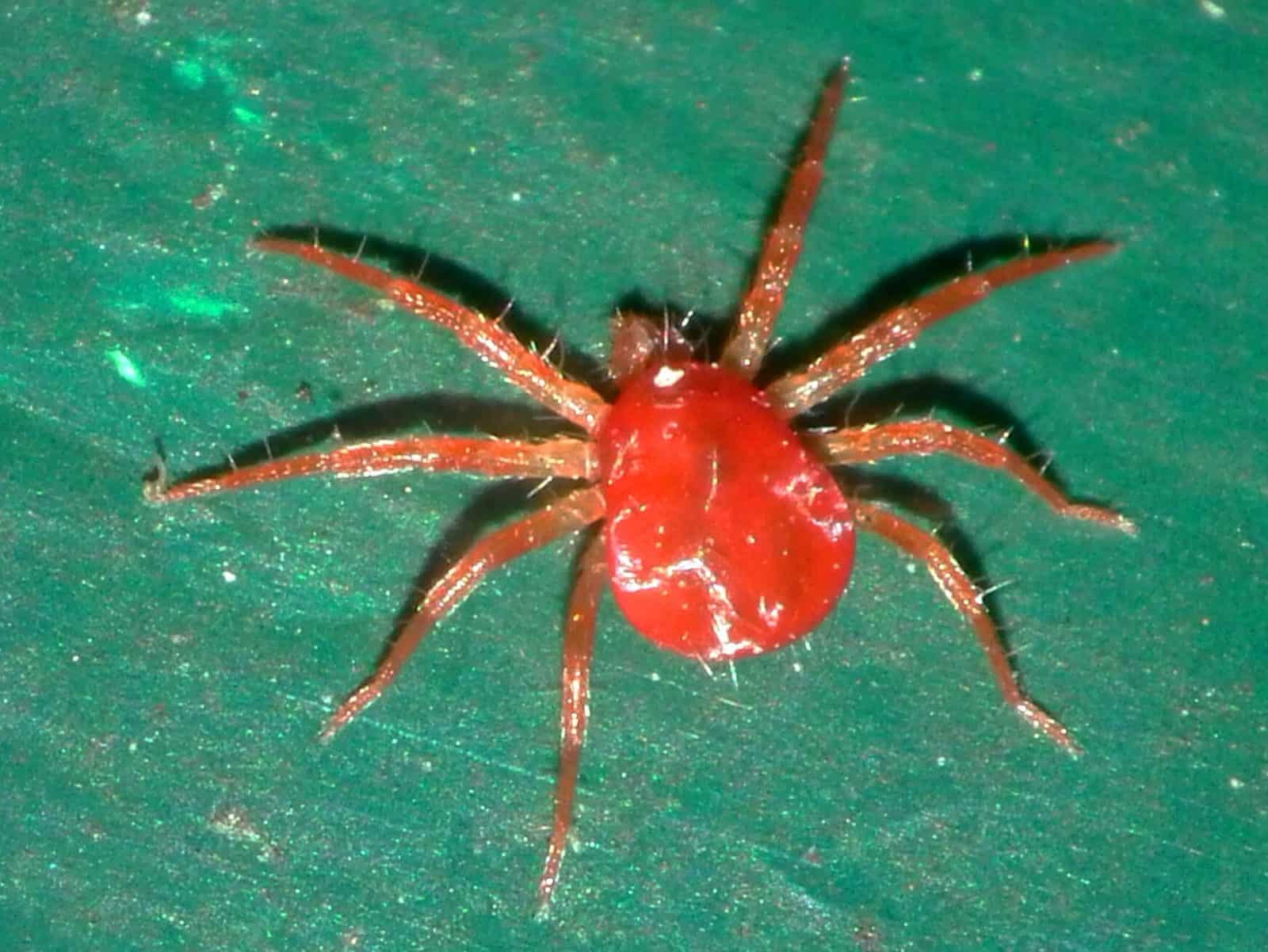 The red spider mite is a very resistant plague and difficult to combat, since it mutates easily from one generation to another.
The red spider mite is a very resistant plague and difficult to combat, since it mutates easily from one generation to another.
For its control, it is recommended to keep the weed crops clean. It is also recommended to avoid substrates with excess nitrogen.
In fairly dry climates it is recommended to water the papaya at night to maintain humidity.
To combat an infestation, an extract of garlic and chili can be applied.
nematodes
 They are easily transmitted by irrigation water and by any means of land transport.
They are easily transmitted by irrigation water and by any means of land transport.
In addition, nematodes are virus vectors and facilitate the entry of bacteria and fungi through the wounds they have caused.
For its control, we can plant garlic cloves as a repellent.
It is also important to have a crop rotation and fertilize our soil.
They can also be treated with steam sterilization and solarization.
aphids
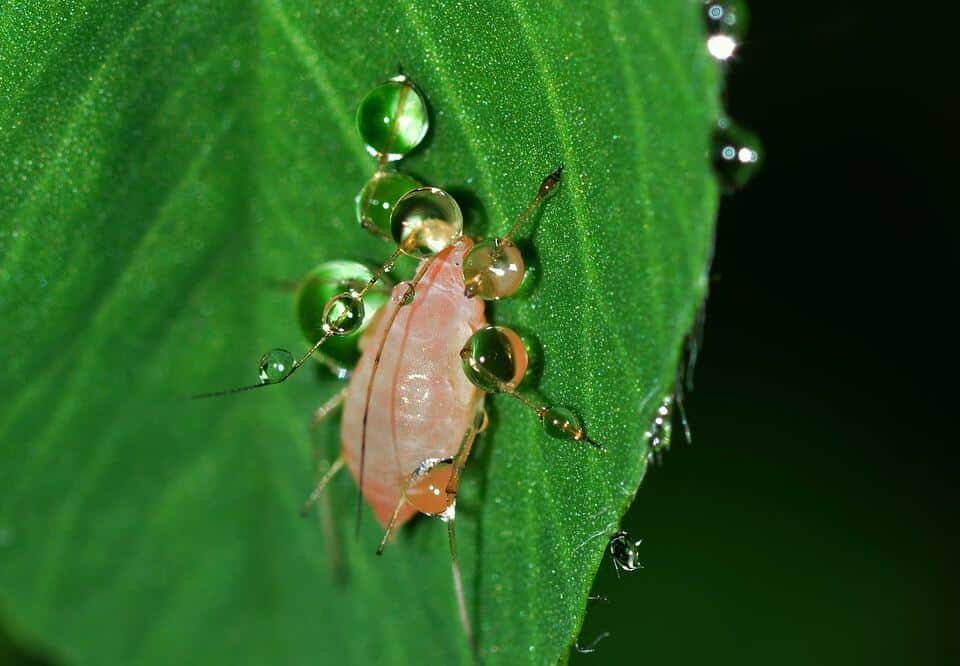 In addition to damaging leaves and fruit, aphids spread ring spot virus.
In addition to damaging leaves and fruit, aphids spread ring spot virus.
For its prevention, it is recommended to apply potassium soap and neem oil.
Jamaica or corn can also be planted, since the aphid prefers to feed on them. In this way, we prevent the spread of the virus.
Anthracnose (Gloesporium amygdalinum)
Produced by the fungi Glomerella cingulata and Colletotrichum gloesporioides, they cause erosions in ripe papaya fruits.
To prevent it, it is recommended to irrigate by dripping or aspersion, and apply horsetail.
It is also essential to promote good ventilation of the papaya.
How long does papaya live?
It is one of the fruit trees with the shortest life cycle, since it reaches a maximum of 6 years.
How long does papaya take to grow?
It grows quickly and in less than a year it will already have its well-formed structure.
How long does it take to produce fruit?
It all depends on the variety but, in general, after 4 months of planting it will already be able to start producing fruit.
Can it be grown in a pot?
There is no condition that prevents papaya from being grown in a pot, as its roots are non-invasive and do not spread too much.
How many times does papaya produce fruit?
The production of papaya fruits is up to 50 units per plant per year.
That gives an equivalence of 4 to 5 harvests in areas with warm environments, approximately.
Should papaya be pollinated to obtain fruit?
To be pollinated, male and female flowering plants must coexist.
The good news is that this does not need to happen in all scenarios, since there are papayas that produce fruit without pollination.
How cold can papaya tolerate?
It is not a plant that tolerates cold, apart from a possible drop in temperature to a maximum of 15° C.
How many papayas can be planted per hectare?
A convenient number of papaya specimens per hectare exceeds 2 thousand units.
What kind of fertilizer does papaya need?
The recommended fertilization operates around ammonium sulphate during the first year of life to complement later according to the existing deficiencies in the soil.
How much heat and/or drought can papaya tolerate?
It is a plant that does better with warm climates, being able to live up to temperatures of 35° C.
It does not go well with droughts, especially when it is in full production phase.
To learn more about planting trees:

![Photo of Plusia or Green Worm: [Characteristics, Detection, Effects and Treatment]](https://www.complete-gardening.com/wp-content/uploads/2022/08/plusia-or-green-worm-characteristics-detection-effects-and-treatment.jpg)
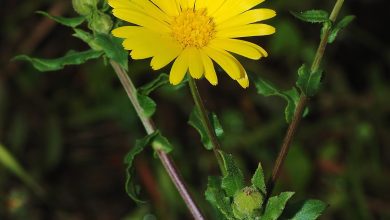
![Photo of Kalanchoe cuttings: [Grafts, Time, Rooting and Planting]](https://www.complete-gardening.com/wp-content/uploads/2022/08/kalanchoe-cuttings-grafts-time-rooting-and-planting-390x220.jpg)
![Photo of Agerato: [Cultivation, Irrigation, Care, Pests and Diseases]](https://www.complete-gardening.com/wp-content/uploads/2022/08/agerato-cultivation-irrigation-care-pests-and-diseases-390x220.jpg)